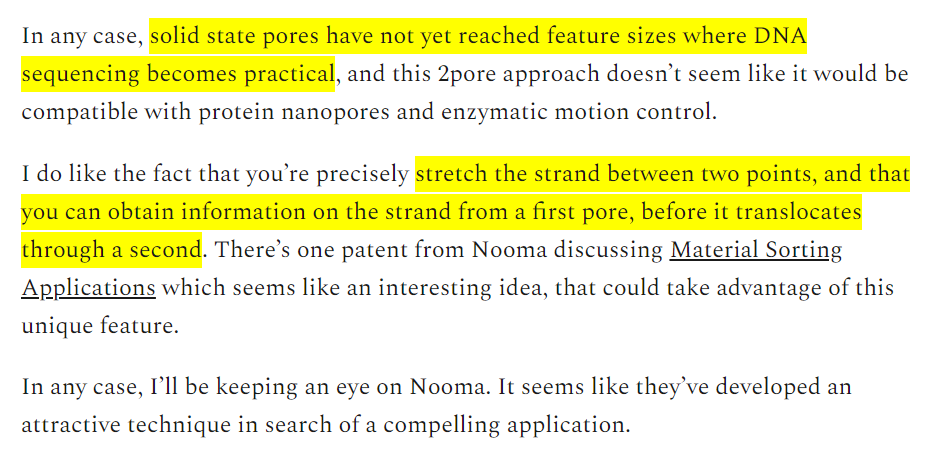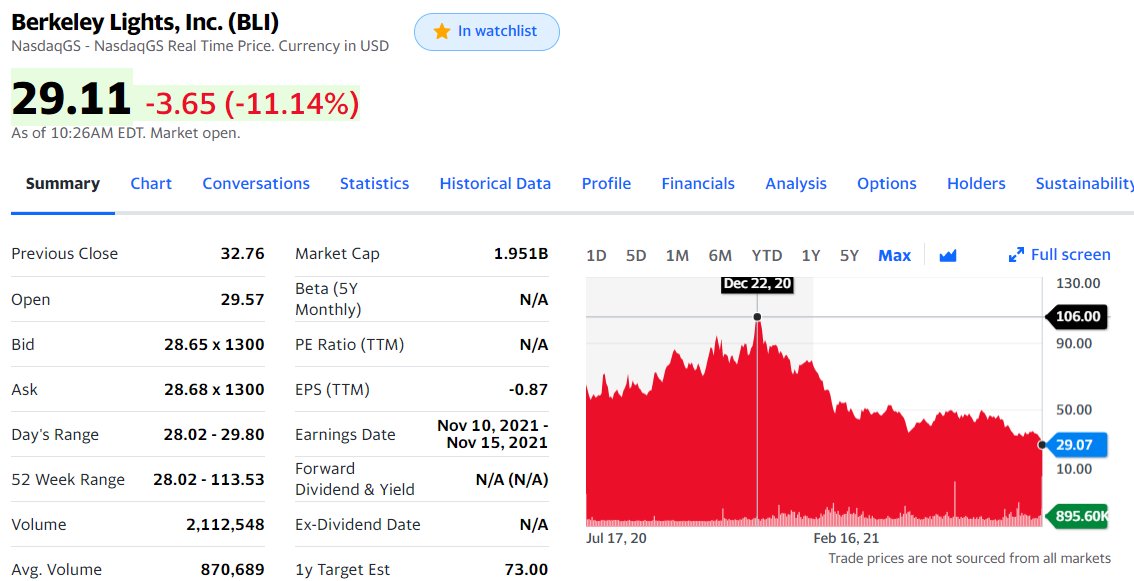
Some thoughts on the Nooma Bio insights from @new299 's substack blogpost:
I saw this picture and it reminded me a lot of another similar schematic, which is for photolithography of semiconductor chips (right-hand picture)

I saw this picture and it reminded me a lot of another similar schematic, which is for photolithography of semiconductor chips (right-hand picture)
https://twitter.com/AlbertVilella/status/1428368456626315266


The whole point of the more complicated setup in the Nooma Bio approach is that, by having 3 electrodes and two pores, one can control the flow better. But also, read the same single molecule more than once in the same pore pair. Nava puts it clearly here: 

Further down, it seems there would be a limit to how fast/slow the molecules go through the pore, which would make it difficult to reach DNA base resolution (even worse for #NGPS protein sequencing) 

There are two conclusions on my end: (1) it seems like the 3 electrode + 2 solid-state pore approach has been given a lot of thought. Maybe, and I am purely speculating here, this is because they envisage a way of producing these at scale, similar to the FinFETs in picture 2.
The other thought is that they may have a big player out there ($ILMN, $PACB, Oxford @nanopore, @MGI_BGI, etc.) realize that they could fit this technology in an already existing workflow, and then they become targets for acquisition.
I don't know what that would be, but I keep thinking that someone may come up with a to combine the strengths of #longread low accuracy methods with the #shortread methods. It has always been very difficult to precisely cut a long molecule of DNA at the exact length you would...
... then sequence it on a SBS-like #shortread sequencer, and in terms of the better quality data at the end of it, that would have great advantages. So think of barcoding 150mers, but in a way that you know the order of the barcodes relative to each other.
Again, this is pure speculation, but that could, in theory, turn concatenated short-reads into a synthetic long-read molecule without the drawbacks of all the methods used so far. So if a setup like the Nooma Bio chamber can be scaled up and combined with a tagmentation step,
then one would be able to use the already existing methods, mainly from #spatialomics, of having very dense barcodes in an array where the sequence of each barcode is known. Combining the two would be an appealing proposition.
Once more: these are all speculations and blue sky thinking. I have no further insight into this than what's available on the public domain.
@d2unroll unroll
• • •
Missing some Tweet in this thread? You can try to
force a refresh









